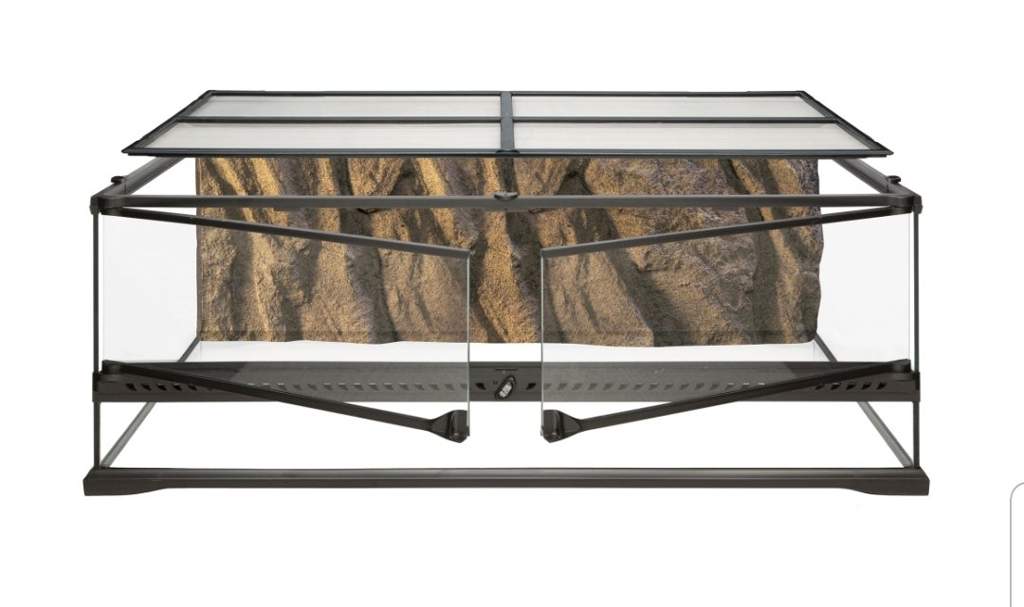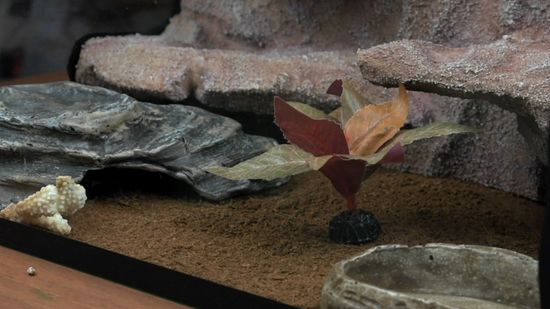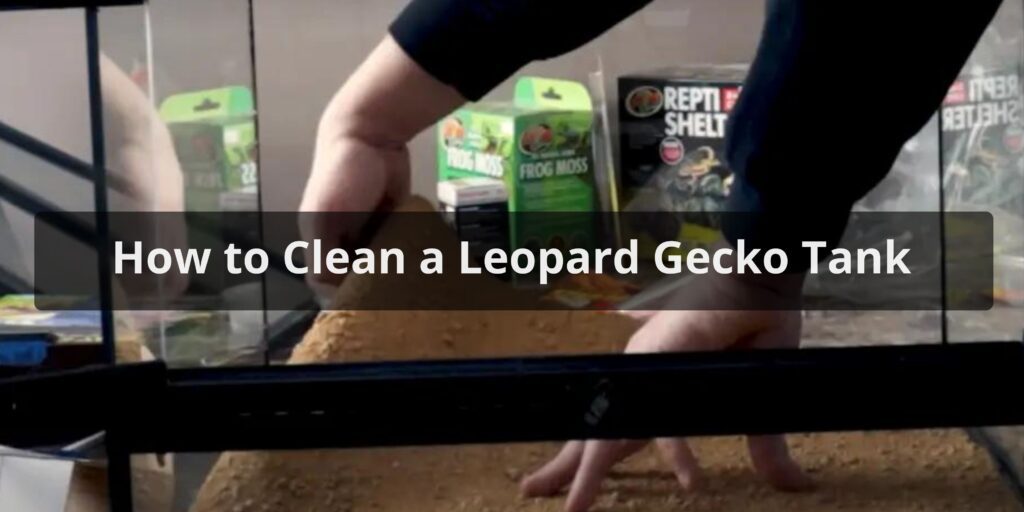How to clean leopard gecko tank? Keeping a leopard gecko’s tank clean is one of the most important parts of leopard gecko care. A dirty tank can lead to health issues and stress for your leopard gecko. Cleaning the tank thoroughly every 1-2 weeks is recommended to provide your gecko with a healthy living environment.
Supplies Needed
To clean a leopard gecko tank, you will need the following supplies:
- Mild dish soap or reptile-safe cleaner
- Water dechlorinator
- Clean rags or paper towels
- A clean bucket or container for water
- A spare temporary enclosure for your gecko during cleaning
Step-by-Step Cleaning Process

Here is a step-by-step guide to cleaning a leopard gecko tank:
1. Remove Decor and Substrate
Take out all decor items like hides, plants, wood pieces etc. Remove any substrate material like reptile carpeting or calcium sand. Discard any soiled substrate.
2. Remove Gecko
Gently transfer your leopard gecko to a clean temporary enclosure like a plastic tub with air holes, while you clean the tank. This prevents stress and removes them from potential fumes.
3. Clean Water and Food Dishes
Scrub food and water bowls thoroughly with hot water and dish soap. Rinse very well and allow to fully dry before returning to the tank. Replace water daily and disinfect food bowls regularly.
4. Wash Tank and Decor
Mix a reptile-safe cleaner or mild dish soap with warm water in a bucket. Use this mixture and clean rags/paper towels to scrub down the tank and all decor items, removing stuck on waste and buildup. Rinse everything very well with plain water.
5. Disinfect Tank
Make a disinfecting solution of 1 part bleach to 10 parts water. Lightly spray or wipe this solution over all surfaces of the tank and decor. Allow to sit for 15-20 minutes. Rinse everything very thoroughly with plain water and dry completely.
6. Replace Substrate
Add fresh substrate material to the tank. Good options include reptile carpeting, paper towels, or safe particulate substrates like reptile sand. Spot clean substrates regularly and fully replace every 4-8 weeks.
7. Add Decor and Supplies
Once fully clean and dry, return all hides, plants, wood, and other decor items to the tank. Refill the water dish with dechlorinated water and add back a clean food dish.
8. Return Your Gecko
Once the tank is fully clean, dry, and set up, gently return your leopard gecko to their home. Monitor them closely over the next few days to ensure they are settling back in smoothly.
Cleaning the Tank Thoroughly

It is important to fully clean the entire tank, decor, and supplies to help control bacteria, odors, and parasite growth. Spot cleaning between full cleanings helps maintain cleanliness. Here are some key points for thorough cleaning:
- Use the proper cleaning and disinfecting solutions at the right concentrations
- Physically scrub off all stuck on waste, crust, and debris
- Completely rinse off all soap and disinfectant residues
- Dry the tank fully before re-assembling to prevent mold
- Replace substrates and decorative items when overly soiled
- Clean decor, supplies, and substrates separately from the tank
Thoroughly cleaning the entire tank, 2-3 times per month, provides the healthiest environment for your leopard gecko.
Signs It’s Time for a Cleaning
Some signs that your leopard gecko’s tank needs a full cleaning include:
- Noticeable waste buildup
- Visible algae growth on decor or glass
- clouded water or water with debris
- Stains on substrates or tank surfaces
- White crusty buildup, especially in corners
- Strong smells coming from the tank
- Your gecko avoiding certain areas
When you notice any of these, do a full tank cleaning as soon as you can to restore cleanliness.
Cleaning Safety Tips
Here are some important safety tips to follow when cleaning your leopard gecko’s tank:
- Never use harsh household cleaners or soaps, only reptile-safe products
- Avoid using any cleaners that contain phenols or pine scents
- Read all product labels carefully and follow usage directions
- Thoroughly rinse off all soap and disinfectant residues
- Ensure the tank is completely dry before returning your gecko
- Dispose of old substrates safely and properly in sealed bags
Providing a Clean and Healthy Home

With proper cleaning every 1-2 weeks, you can provide your leopard gecko with a safe, hygienic home. Use the mild cleaning solutions recommended and be sure to fully rinse residues. Give your gecko a thorough tank cleaning 2-3 times per month for optimal health and happiness. A clean tank will lead to a healthier, more active gecko.
FAQs About How to Clean Leopard Gecko Tank
How often should I clean my leopard gecko’s tank?
You should perform routine spot cleaning of your gecko’s tank daily to remove waste and uneaten food. Deep cleaning, including substrate replacement and sanitizing, should be done every 3-4 months. Regular maintenance ensures a healthy and hygienic environment for your gecko.
What equipment and supplies do I need for tank cleaning?
For tank cleaning, gather essential supplies: a substrate scooper, paper towels or reptile-safe wipes, a reptile-safe disinfectant, a separate clean container for your gecko, and, if necessary, gloves. Having these items ready simplifies the cleaning process and ensures your gecko’s safety.
Can I clean the tank while my gecko is inside?
It’s best to remove your gecko from the tank during cleaning to prevent stress or injury. Place your gecko in a secure, temporary container with appropriate temperature and hides while you clean. This keeps both your gecko and the cleaning process safe and stress-free.
What’s the proper way to remove waste and uneaten food?
Use a substrate scooper or paper towels to spot clean waste and uneaten food daily. Dispose of these materials properly. For deep cleaning, remove all decor and substrate, clean the tank with a reptile-safe disinfectant, rinse thoroughly, and replace substrate and decor as needed.
How do I clean and sanitize the tank effectively?
To clean and sanitize the tank effectively, remove your gecko, substrate, and decor. Clean all surfaces, including hides and decor, with a reptile-safe disinfectant. Rinse thoroughly to remove any residue. Allow everything to dry completely before returning your gecko to the clean enclosure. Regular maintenance ensures a safe and healthy habitat.




